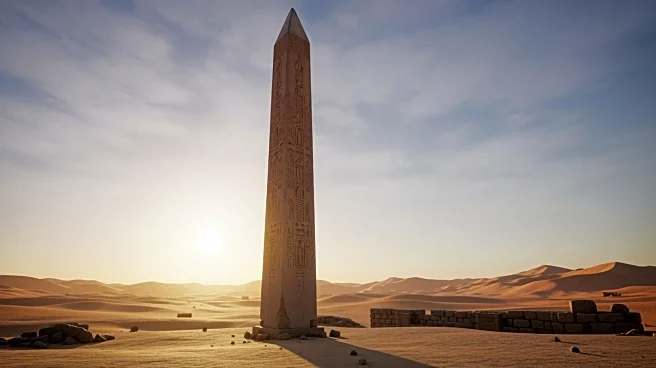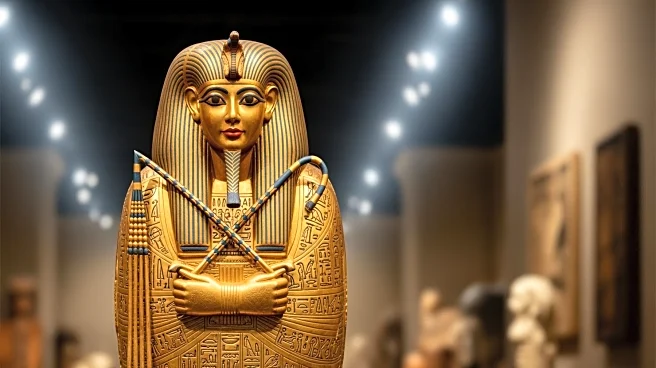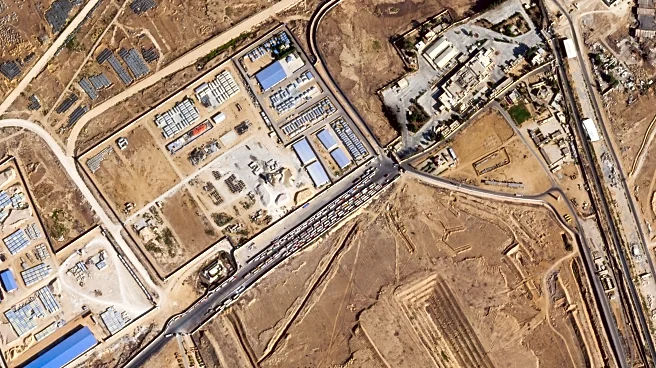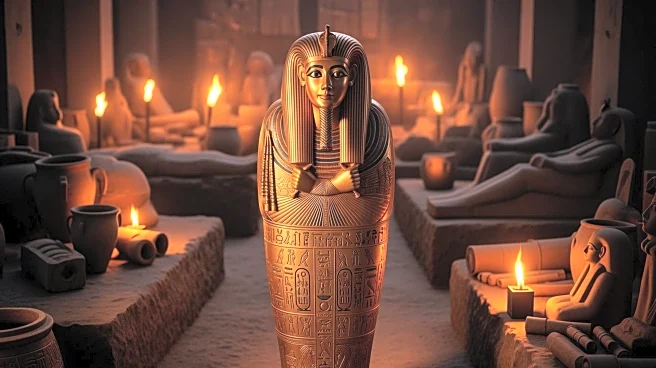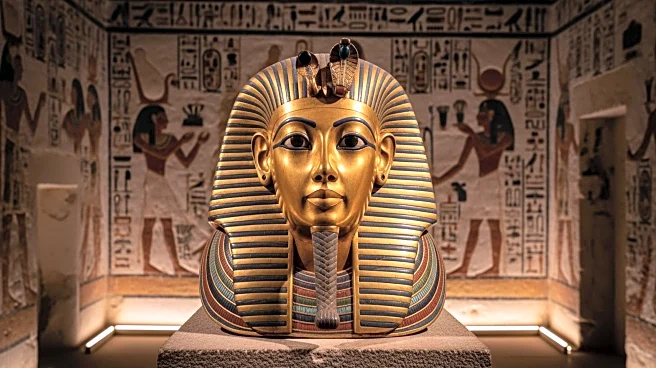What's Happening?
Recent archaeological research has uncovered a significant geological feature beneath the Karnak Temple in Luxor, Egypt, suggesting that the temple's foundations were laid on a natural island formed by the Nile's shifting channels over 4,500 years ago.
This discovery, led by an international team of geo-archaeologists, indicates that the site was chosen not just for its fertile ground but for its resemblance to ancient Egyptian creation mythology. The study, published in Antiquity, reveals that the earliest structures at Karnak may date back to the Old Kingdom, around 2300 BCE, rather than the previously believed Middle Kingdom period. The research involved analyzing 61 sediment cores and thousands of pottery fragments, which helped reconstruct the geomorphic evolution of the landscape.
Why It's Important?
This discovery has profound implications for understanding the historical and cultural significance of Karnak Temple. It reframes the temple not merely as a religious complex but as a deliberate embodiment of mythological beliefs, where geography and theology were intertwined. The findings suggest that the site was selected for its spiritual resonance, mirroring the ancient Egyptian cosmogony of a primordial mound rising from chaotic waters. This challenges previous assumptions about the motivations behind the temple's location, highlighting the Egyptians' sophisticated interaction with their environment. The research also sheds light on the dynamic relationship between ancient Egyptians and the Nile, revealing how they adapted and manipulated the landscape for religious and construction purposes.
What's Next?
The study opens new avenues for archaeological exploration in the region, particularly concerning the eastern Nile channel, which was previously considered marginal. The findings suggest that this channel was once larger and more active than the western flow, prompting further investigation into its historical significance. Researchers may continue to explore how ancient Egyptians utilized and altered their environment, potentially uncovering more about their engineering techniques and religious practices. Additionally, the discovery may influence how modern archaeologists approach the study of ancient sites, considering both geological and mythological factors in their analyses.
Beyond the Headlines
The revelation of Karnak's foundations as a natural island has broader implications for understanding ancient Egyptian civilization. It highlights the importance of integrating environmental and cultural studies to gain a comprehensive view of historical developments. The study underscores the Egyptians' ability to perceive and utilize their natural surroundings in ways that reflected their cosmological beliefs, offering insights into their worldview and societal priorities. This approach may inspire similar investigations at other historical sites, potentially leading to a reevaluation of how ancient cultures interacted with their landscapes.





